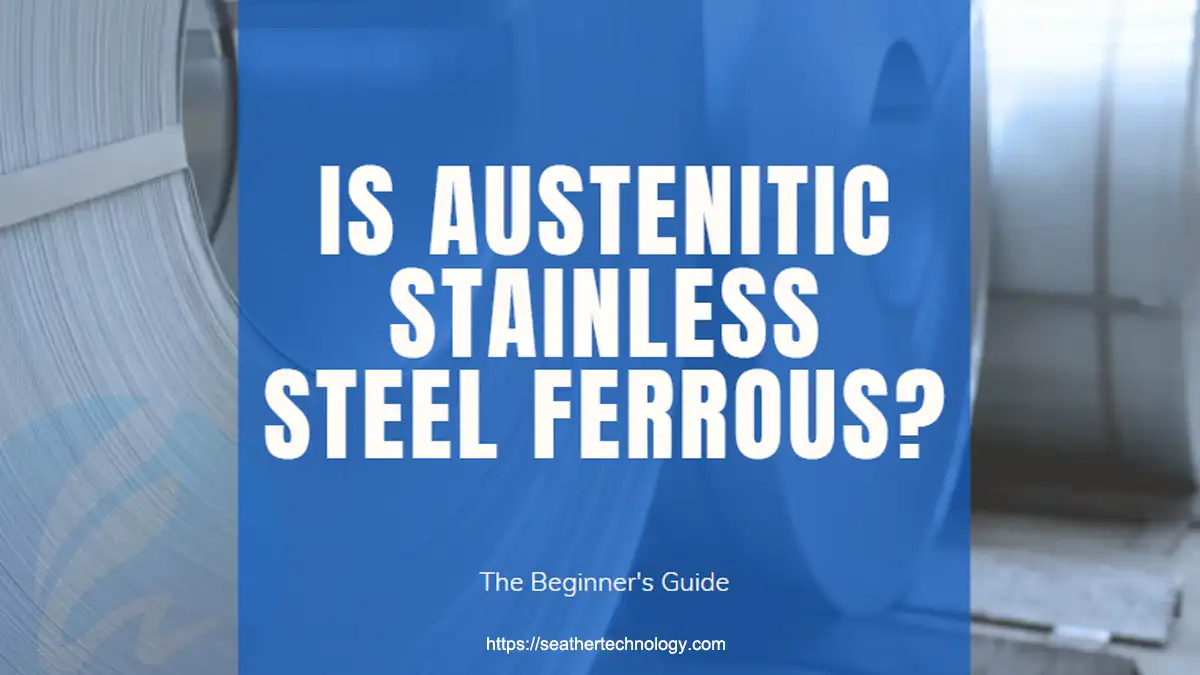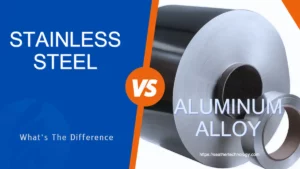A ferrous metal is that which contain iron contents in its composition.
All the grades of austenitic stainless steel have iron in different compositions so austenitic stainless steel is ferrous.
Ferrous metals are mostly used in metal casting industry for making casting molds for casting on very large scale.
Ferrous metals are typically stronger than non-ferrous metals, and heat treatment can further increase their material qualities.
Most of the alloys are ferrous which contain large amount of iron with some other alloy elements like aluminum, copper, lead and tin.
The most commonly used stainless steel family is austenitic. Due to the higher concentration of austenite (gamma-phase iron), most austenitic stainless steels are nonmagnetic.
Despite the fact that stainless steel grades such as 304 and 316 include a significant percentage of iron in their chemical composition, austenite represents them non-ferromagnetic.
Another common feature of austenitic stainless steel alloys is that they are nonmagnetic by nature, however they may become magnetic by cold working treatment.
If you want to learn more about if austenitic stainless steel is ferrous, this article is very helpful for you.
Let’s keep reading.
What is austenitic stainless steel?
Austenitic stainless steel is very popular and most widely used type of stainless steel due to its excellent strength, corrosion resistance and durability. Austenite is formed by heating the ferrite phase to 912 degrees Celsius, at which time it transforms from a body-centered cubic (BCC) crystal structure to a face-centered cubic (FCC) crystal structure.
Every grade of this family includes specific amount of chromium and nickel and some grade also include molybdenum and manganese for required properties.
This grade of steel can be hardened through cold working because heat based hardening is not work for austenitic steel.
Austenitic grades can be used from cryogenic to high temperatures due to their ductility, toughness, and mechanical strength and it can maintain these properties throughout a wide temperature range.
Austenitic stainless steel can maintain its mechanical strength at elevated temperatures. At these high temperatures, a high silicon concentration also improves corrosion resistance to hot sulfuric acid.
Austenitic stainless steel grade
Some common grades of austenitic stainless steel and their detail are given below:
Grade 301 austenitic stainless steel
Grade 301 stainless steel provides superior corrosion resistance due to chromium and nickel. It gets more ductility and strength when cold worked. Grade 301 stainless steel is extensively used in welding, forming, and drawing due to its characteristics.
Grade 316L austenitic stainless steel
Grade 316L stainless steel is a kind of austenitic stainless steel, a lower carbon variant of 316 stainless steel.
It is also referred to as the UNS S31603/W.Nr. 1.4404 stainless steel.
Both 316 and 316L stainless steels contain molybdenum, but 316L stainless contain more molybdenum than 316 stainless steel. Though 316L features better corrosion resistance than 316, but its mechanical properties are not as good as 316.
Due to the addition of molybdenum in the steel, the overall performance of 316L steel is superior to that of 310S and 304L stainless steel.
This grade of stainless steel is well-known for its increased machinability, mild corrosion resistance, ductility and formability. It is frequently used in applications where machinability is essential, such as screw machining, bushings and bearings valve and pump components, shafts and pins, nuts and bolts.
Grade 310S austenitic stainless steel
The 310S stainless steel is a steel grade designed primarily for high-temperature applications. It has high chromium (24-26%) and nickel (19-22%) content, which provides exceptional resistance to oxidation and high-temperature strength. Grade 310S is known for its exceptional strength and resistance to deformation at high temperatures, good general corrosion resistance in a wide range of environments, particularly in acidic and alkaline conditions.
Grade 321 austenitic stainless steel
The grade 321 is one of the austenitic stainless steel grades which have been stabilized with titanium (0.4-0.7%). Titanium improves weldability, resistance to reactivity, and resistance to intergranular corrosion at high temperatures. Grade 321 also has great resistance to general corrosion, strength at elevated temperatures, good ductility, strong mechanical characteristics and formability. This grade easily weldable using standard welding processes such as TIG or MIG welding.
Grade 321 is often used in applications requiring high temperature and corrosion resistance, such as aircraft exhaust systems, afterburners, jet engine parts and heat exchangers.
Is austenitic stainless steel ferrous?
All the grades of stainless steel have iron content in their composition so the austenitic stainless steel is ferrous.
However some grades of austenitic is magnetic and others are non-magnetic. Some austenitic grades like 304 and 316L have iron content in their composition these grades are known as non-ferromagnetic.
Through proper thermal treatment or work-hardening, they can be made slightly magnetic.
Is 304 stainless steel ferrous?
Most grades of stainless steel in this category are non-magnetic due to a significant amount of austenite. Even though some metals, such as grade 304 have iron contents in their chemical composition, they are austenite, which means they are non-ferromagnetic.
Due to the main alloying ingredients are 18% chromium and 8% nickel, 304 stainless steel is sometimes known as “18-8” stainless steel. It is one of the most commonly used and adaptable grades, with outstanding corrosion resistance, formability, and durability.
Along with chromium and nickel, 304 have a minor concentration of, silicon, sulfur, phosphorus, and carbon, as well as a maximum of 2% manganese.
Grade 304 stainless steel is used in a wide range of applications and product sectors, including storage tanks, worktops, sinks, cookware, tanks, pipelines, surgical equipment, and implant materials.
Is 316L stainless steel ferrous?
This grade of austenitic stainless steel is also a non-ferromagnetic, although when cold worked, 316L stainless steel or any other austenitic stainless steel will become slightly magnetic.
Sheet metal is typically cold worked in the last phases of production, particularly if a clean, shining surface finish is required.
The product would have to be annealed after final rolling to remove the magnetic characteristics. This, however, would make dull the surface. It would also have a negative impact on strength.
316L stainless steel contains chromium (16-18%), nickel (10-14%), and molybdenum (2-3%).
This composition can improves corrosion resistance, especially in chloride-rich situations like marine and swimming pool equipment.
When annealed, stainless steel 316L is non-magnetic and has better corrosion resistance than stainless steel 304.
Conclusion
The austenitic stainless steel family is mostly utilized in many applications sue to its outstanding properties such as: corrosion resistance, strength, toughness and ductility.
In principle, many of the austenitic stainless steel products we stock will contain iron, although many people would not consider them ferrous as iron is a minor constituent.
We have expertise in all the grades of austenitic stainless steels.
If you want to know detailed information about your project then contact us our experienced staff will guide you to choosing the right grade of stainless steel for your project.






